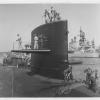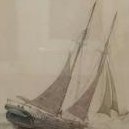-
Posts
2,843 -
Joined
-
Last visited
About kurtvd19

Profile Information
-
Gender
Male
-
Location
Far West Chicago Suburbs
Recent Profile Visitors
-
 Boccherini reacted to a post in a topic:
Lathe Question
Boccherini reacted to a post in a topic:
Lathe Question
-
 kurtvd19 reacted to a post in a topic:
Sloop Speedwell by Chuck - Ketch Rigged Sloop, 1752 - POF
kurtvd19 reacted to a post in a topic:
Sloop Speedwell by Chuck - Ketch Rigged Sloop, 1752 - POF
-
 ferretmary1 reacted to a post in a topic:
Are you an NRG Member???
ferretmary1 reacted to a post in a topic:
Are you an NRG Member???
-
 kurtvd19 reacted to a post in a topic:
Caroline N by mbp521 - Scale 1:64 - Mississippi River Towboat
kurtvd19 reacted to a post in a topic:
Caroline N by mbp521 - Scale 1:64 - Mississippi River Towboat
-
 mtaylor reacted to a post in a topic:
Lathe Question
mtaylor reacted to a post in a topic:
Lathe Question
-
 Keith Black reacted to a post in a topic:
Lathe Question
Keith Black reacted to a post in a topic:
Lathe Question
-
 Scottish Guy reacted to a post in a topic:
Lathe Question
Scottish Guy reacted to a post in a topic:
Lathe Question
-
 catopower reacted to a post in a topic:
Are you an NRG Member???
catopower reacted to a post in a topic:
Are you an NRG Member???
-
 allanyed reacted to a post in a topic:
Lathe Question
allanyed reacted to a post in a topic:
Lathe Question
-
kurtvd19 started following Blades for Artesania Latina Cutter , Lathe Question , Midwest Sea Bright Dory Wooden Model Kit and 2 others
-
I started with the Taig lathe with many accessories including the milling tool. It did everything I wanted to do including pens. I had a chance to purchase a slightly used long bed Sherline lathe and jumped at the opportunity. I have to say that Sherline has more accessories than Taig but I am not a machinist and both lathes are capable of doing much more than I will ever be capable of doing. I have come to the conclusion that the Taig was perfectly good enough for me and I didn't really gain anything by purchasing the Sherline lathe until I late had a chance to pick up a very slightly used Sherline mill. The ease of switching from turning to milling having both Sherline machines far out weighs the conversion from turning to milling with the Taig lathe with its milling tool. A big difference in price to add the Sherline mill but I am very happy I did it. There are times I wish I had stuck the Taig lathe in the corner because some things I found were easier to do with the Taig but I got my entire investment in the Taig back when I sold it so overall selling it to a club member worked out for both of us.
-
 kurtvd19 reacted to a post in a topic:
Bending hard brass.
kurtvd19 reacted to a post in a topic:
Bending hard brass.
-
 mtaylor reacted to a post in a topic:
Caroline N by mbp521 - Scale 1:64 - Mississippi River Towboat
mtaylor reacted to a post in a topic:
Caroline N by mbp521 - Scale 1:64 - Mississippi River Towboat
-
 Canute reacted to a post in a topic:
Caroline N by mbp521 - Scale 1:64 - Mississippi River Towboat
Canute reacted to a post in a topic:
Caroline N by mbp521 - Scale 1:64 - Mississippi River Towboat
-
The flanking rudders move to aid maneuvering. Water flowing over a rudder from the props is very effective in turning the boat (high velocity) while water flowing over the rudder in baking up and not from the props is very ineffective in steering (low velocity). Thus the flanking rudders being ahead of the props work very well in controlling turning while in reverse. The boat can move sideways when the flanking rudders are turned one way with the steering rudders (behind the props) are turned in the opposite direction with one prop in reverse and the other going ahead. I can't remember the combination of port or starboard props in forward and port or starboard in reverse with the direction of the flanking rudders being to port or starboard and steering rudders to being to port or starboard, but both props and rudders must be set in opposite directions to move the boat sideways. Pilots can do this in their sleep before they are entrusted to operate a towboat with barges. I have spent a lot of time on towboats on the IL River when I was associated with the owner of the business and while I did a lot of steering on mostly straight parts of the river or gentle sweeping turns I would never have thought of asking if I could attempt a sharp turn where operating both sets of rudders and using reverse on one prop to aid turning knowing the pilot would absolutely not allow it. Back then I was into R/C boats and had a twin screw towboat with steering and flanking rudders with individual motor control. The towboat company had a real nice shallow pond adjacent to their office building and our Radio Control Model Boat club was able to enjoy operating our boats there. I used to truly enjoy calling out to a Captain or Pilot and ask them if the wanted to operate my tow. They all said yes without hesitation - the first time. After a quick explanation of which control lever on the radio was the steering rudders with the other by default the flanking rudder, the port and starboard motor controls were very obvious which controlled the props. On a 1:1 towboat the steering controls are horizontal levers that operate on a concentric pair of control rods to the rudders. The engine controls are side by side levers with duplicate sets of motor controls on each side of the steering levers. Like I said earlier all Pilots and Captains can make their boats move in any direction by combining steering and motor controls as describer earlier. They don't have to think about forward/reverse/port/starboard. But the simple fact that there is a different R/C control layout than in any towboat caused them to screw up the simplest maneuver. Most would hand me the radio and walk away after just a few minutes. But most of them came back later because "no toy boat is smarter than me!" We did have a lot of fun operating at the shipyard.
-
 kurtvd19 reacted to a post in a topic:
Sloop Speedwell by Chuck - Ketch Rigged Sloop, 1752 - POF
kurtvd19 reacted to a post in a topic:
Sloop Speedwell by Chuck - Ketch Rigged Sloop, 1752 - POF
-
 kurtvd19 reacted to a post in a topic:
NRG Rigging Project by tlevine
kurtvd19 reacted to a post in a topic:
NRG Rigging Project by tlevine
-
 kurtvd19 reacted to a post in a topic:
Peerless by Cathead - 1:87 - 1893 sternwheel Missouri River steamboat
kurtvd19 reacted to a post in a topic:
Peerless by Cathead - 1:87 - 1893 sternwheel Missouri River steamboat
-

Are you an NRG Member???
kurtvd19 replied to Chuck's topic in How to use the MSW forum - **NO MODELING CONTENT**
Something that we offer to members are the Virtual Workshops we offer throughout the year on Saturday mornings (10:30 AM Central). We record the workshops and within a week or two they are available on the website for members to view as often as they want. We have a new workshop on May 4 on Basics of the Air Brush. We also have a two part one on June 15 on Creating Realistic Working Sails and Creating Furled Sails. Check out the recordings in the Events section of the website. Also, they are priced right - FREE! All members will get an email with the Zoom link real soon. -
 kurtvd19 reacted to a post in a topic:
Sloop Speedwell by Chuck - Ketch Rigged Sloop, 1752 - POF
kurtvd19 reacted to a post in a topic:
Sloop Speedwell by Chuck - Ketch Rigged Sloop, 1752 - POF
-
 kurtvd19 reacted to a post in a topic:
HM Cutter Alert by Thukydides - Vanguard Models - 1:64 - first build
kurtvd19 reacted to a post in a topic:
HM Cutter Alert by Thukydides - Vanguard Models - 1:64 - first build
-
 kurtvd19 reacted to a post in a topic:
Are you an NRG Member???
kurtvd19 reacted to a post in a topic:
Are you an NRG Member???
-
 kurtvd19 reacted to a post in a topic:
Are you an NRG Member???
kurtvd19 reacted to a post in a topic:
Are you an NRG Member???
-

Are you an NRG Member???
kurtvd19 replied to Chuck's topic in How to use the MSW forum - **NO MODELING CONTENT**
Check out the NRG website thenrg.org You can join for as little as $40 (US funds) with the Digital Edition. It can be read on-line or saved to your computer. You can print out articles for your private use (copyrights). There is a downloadable pdf copy of a Journal you can read to see a typical Journal. There is a lot of useful information on the site. Like all hobby related magazines we can only print what is submitted. We do pay for modeling articles so you might want to consider sharing with your fellow modelers and write an article - and get paid. As others have said NRG membership helps support MSW. Take care, Kurt -
Looks great Eric. Brian, I use one of the magnetic squaring jigs when it's possible to build off the model. When it's scratch I always use it.
- 254 replies
-

Midwest Sea Bright Dory Wooden Model Kit
kurtvd19 replied to Nemovir's topic in Wood ship model kits
Model Expo has licensed the Midwest line of boat models from Midwest and are now manufacturing the kits. Check their catalog. They are also distributing some of the kits to Micro Mark. Check/compare the prices. Model Expo likely lower. -
The books are a great addition - really personalizes the model.
- 796 replies
-
- speedwell
- syren speedwell
-
(and 1 more)
Tagged with:
-
I can't remember the brand as there were several saws made with this junk motor type. Jarmac? for the brand possibly. A lot of end play so the blade kind of goes where it wants and it goes way too fast. It's wort $5 at the most sorry but it's junk.
-

Preac thickness sander
kurtvd19 replied to bushman32's topic in Modeling tools and Workshop Equipment
The sanding drum or the sandpaper on the sanding drum? -

Blades for Artesania Latina Cutter
kurtvd19 replied to brunnels's topic in Modeling tools and Workshop Equipment
Get your money back. -
I have made and used the type of soldering jig described. I was not bothered much by the torch's effect on the wood as I used my Smith Little Torch. However, I kept a bowl of water and a good sized ratty paint brush right next to my soldering spot on the bench in case of fire. I used it a few times to knock down smoldering areas before flames would appear. I also have a fire extinguisher real close. Be prepared rather than being sorry you were not prepared. Kurt
-
Eric: Silk span painted to represent canvas is the way I would go. Kurt
- 254 replies
About us
Modelshipworld - Advancing Ship Modeling through Research
SSL Secured
Your security is important for us so this Website is SSL-Secured
NRG Mailing Address
Nautical Research Guild
237 South Lincoln Street
Westmont IL, 60559-1917
Model Ship World ® and the MSW logo are Registered Trademarks, and belong to the Nautical Research Guild (United States Patent and Trademark Office: No. 6,929,264 & No. 6,929,274, registered Dec. 20, 2022)
Helpful Links
About the NRG
If you enjoy building ship models that are historically accurate as well as beautiful, then The Nautical Research Guild (NRG) is just right for you.
The Guild is a non-profit educational organization whose mission is to “Advance Ship Modeling Through Research”. We provide support to our members in their efforts to raise the quality of their model ships.
The Nautical Research Guild has published our world-renowned quarterly magazine, The Nautical Research Journal, since 1955. The pages of the Journal are full of articles by accomplished ship modelers who show you how they create those exquisite details on their models, and by maritime historians who show you the correct details to build. The Journal is available in both print and digital editions. Go to the NRG web site (www.thenrg.org) to download a complimentary digital copy of the Journal. The NRG also publishes plan sets, books and compilations of back issues of the Journal and the former Ships in Scale and Model Ship Builder magazines.












